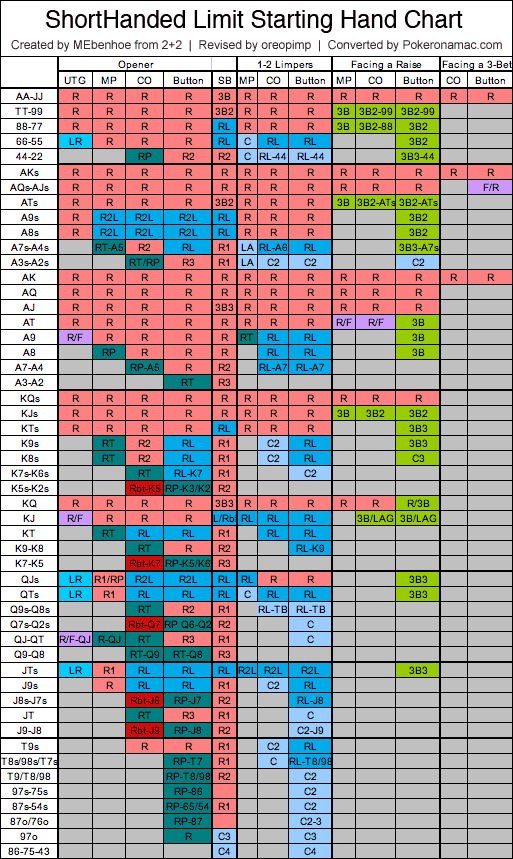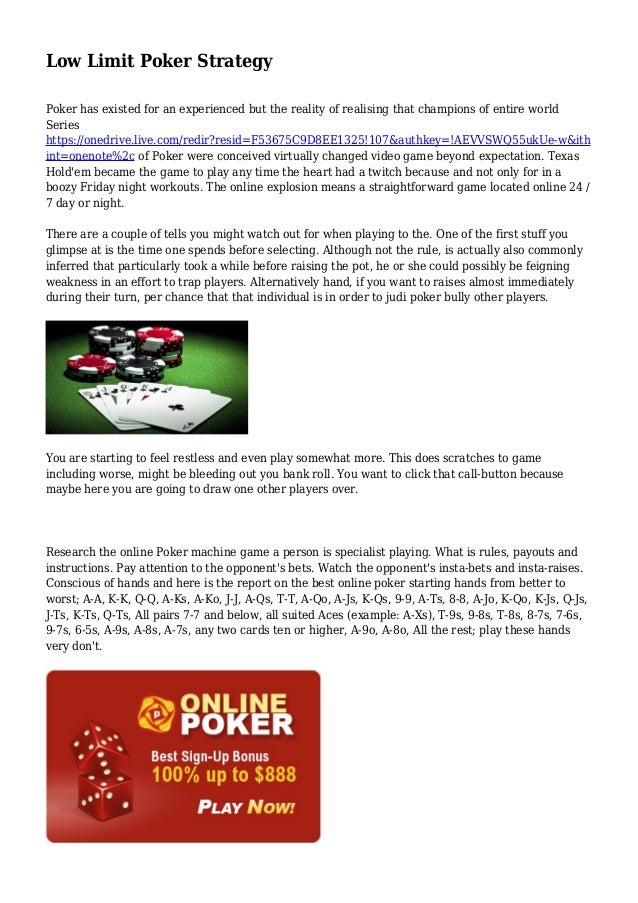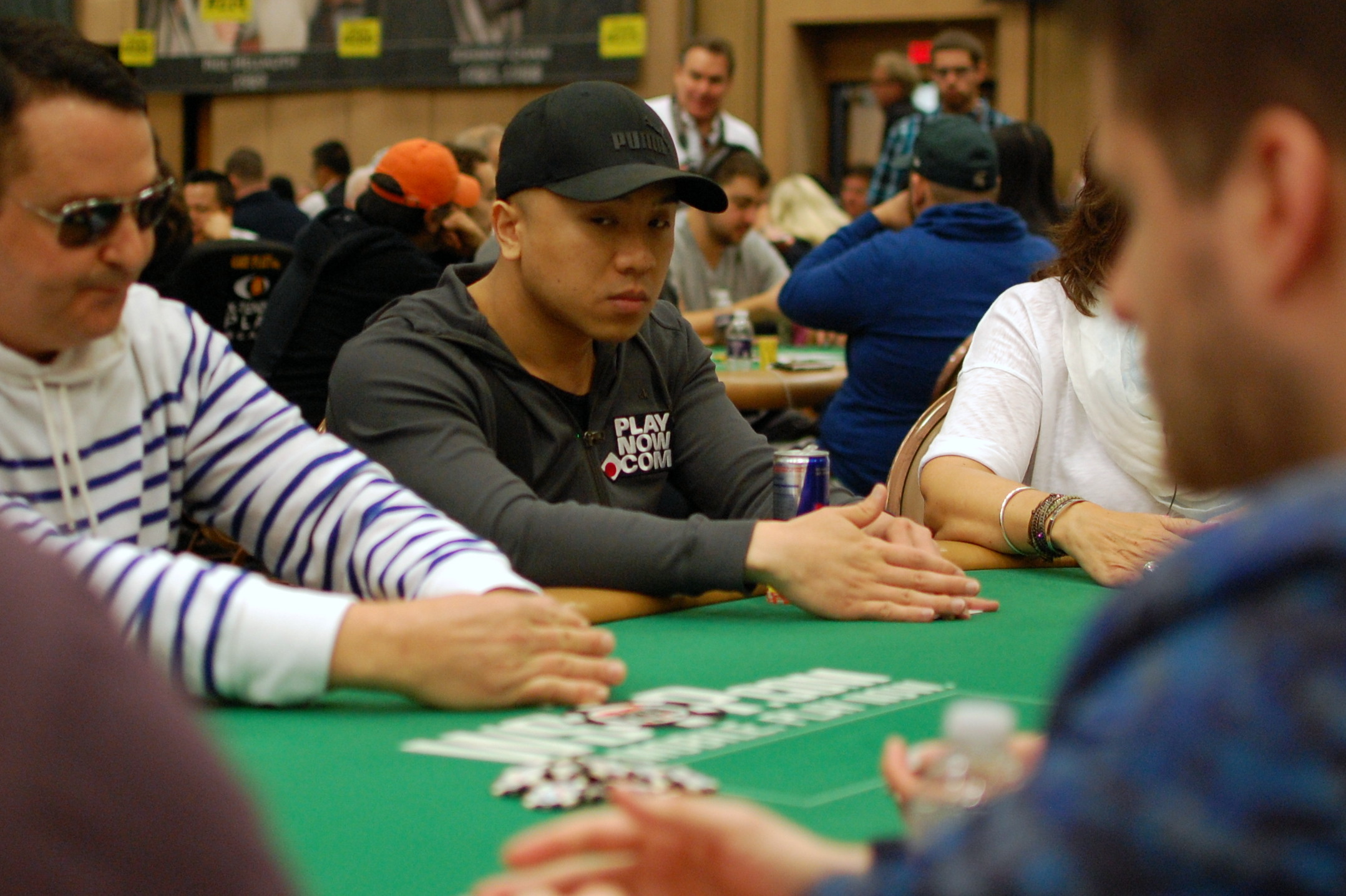Limit Holdem Strategy
- Fixed Limit Holdem Strategy
- Advanced Limit Holdem Strategy
- No Limit Holdem Sites
- No Limit Hold'em Strategy
- Limit Holdem Tournament Strategy

- For example, a $1/$2 limit hold'em table only allows players to bet $1 pre-flop, $1 on the flop, $2 on the turn and $2 on the river. Use our strategy guides to bring your poker game to a whole.
- A good primer for how to play limit hold'em especially if you are a no limit player curious how to adjust.Check out my Full Contact Poker Podcast at http://w.
- No Limit Hold'em Strategy Becoming a better online Texas Hold'em player is a matter of application, dedication and a little bit of luck. Although improving players love to make claims about Hold'em being a skill game, the fact of the matter is that Texas Hold'em online does involve a small element of luck.
The fundamental difference with Fixed Limit Poker strategy is that you can only bet one amount at any one time, and can only reraise a set number of times, per street. This limits the number of decisions available to you, and as a result there is usually a more definitive answer of whether a particular play is right or wrong.
Fundamentals of Poker - Limit Texas Hold'emMason MalmuthTwo Plus Two Magazine, Vol. 8, No. 12- General Guidelines
- Seven Card Stud
- Limit Texas Hold'em
Limit Texas hold ’em is deceptive. It appears easy to play, yet beneath that simple facade lies a game of extraordinary complexity. Many variables must be considered when making decisions, and figuring out the correct play is often difficult. So before we discuss specific hands and how they generally should be played, here are some tips that will help you determine the best course of action.
Know what the best possible hand is and how likely it is to be out.
With certain upcards, the potential for many different strong hands increases. With other upcards, however, the number of combinations is dramatically reduced. For example, if the board is the
no one can have a straight, a flush, or a full house. The best possible hand is three kings.
Whether someone is holding the best possible hand, which in the poker vernacular is referred to as “the nuts,” frequently can be determined by the number of players in the pot and the previous action. The more players there are and the more betting and raising that have taken place, the more likely it is that one of your opponents has the nuts.
Recognize when you hold the best possible hand.
Although this tip is actually a continuation of the one just given, its importance is such that it rates a separate listing. If you have the nuts and fail to recognize it, you will miss betting and raising opportunities which in turn will cost you money. And thinking you have the best possible hand when you don’t can be even more expensive. However, by paying close attention to the board, you will avoid making these costly errors.
As an example, if the board is the
and you hold ace-king, you can’t be beat. You therefore should get as much money as possible into the pot. But if the board shows the 3[diamond] instead of the 3[spade], you can lose to a flush and should proceed with caution.
Position is significant.
Texas hold ’em is known as a fixed-position game as opposed to a random-position game. In other words, the order in which the players act each round is predetermined, rather than determined by the strength of the exposed cards as it is in stud. We have already noted the advantage of acting last in poker. This means that you should be more selective of the hands you play in early position than of those you play in late position.
Don’t overrate suited hands.
 Having two cards of the same suit definitely makes your hand better, but many beginning players tend to overrate the value of suited cards. In short, a hand like ten-six almost always should be thrown away, whether it’s suited or not.
Having two cards of the same suit definitely makes your hand better, but many beginning players tend to overrate the value of suited cards. In short, a hand like ten-six almost always should be thrown away, whether it’s suited or not. High cards are much better than low cards.
It’s just as easy to make a pair when you have high cards as it is when you have low cards. If you hold the
your opponent has the
and both of you flop a pair, you have the better hand. Thus, you would prefer to have your hand made up of big cards.
Poker Strategy and Other Topics - November 2019
by Carlos Welch
by Robert Samuels
by Kevin Haney
by Kevin Haney
by Ben Saxton
by Bryan Clark
by Felipe Garcia, CFA and Aaron Byrd, CFA
by Nick Willett
by Mason Malmuth
If I were teaching a new player to play no-limit hold’em, and my goal were to get this player up to a professional level of play, how would I do it? What would my lessons look like?
Let’s say I had only three months to do it. With most people, I will admit, it would be a tall order. The learning curve is steep these days, and I don’t think everyone could make it from zero to pro in that short a time.
I’d have to make compromises. I couldn’t try to cover every possible situation. I’d have to find the important bits and skip the rest.
I’d also have to tailor the lessons a bit to a specific type of game. The most important skills in some game types are not as important in others. With this in mind, here are what I think my top five lessons would be for a new player trying to beat the $2-$5 no-limit hold’em games in Las Vegas.
Lesson No. 1. Don’t limp into pots ever. And don’t call preflop three-bets unless you are trapping with an ultra-premium hand.
Limping into pots, calling the preflop raise, and then check/folding the flop when you miss is an enormous leak. It’s also one that nearly every player who hasn’t been specifically coached out of it exhibits.
In my opinion, most players would see an immediate improvement in their winrates if they simply refused to limp in with any hand, especially if they chose to instead fold most of these hands.
For most players, refusing ever to limp means playing much tighter, particularly from out of position. Until you’re already an established pro player, tighter is better.
Lesson No. 2. Don’t pay off big turn and river bets.
Fixed Limit Holdem Strategy
This lesson might be different in some types of games, but in the Las Vegas $2-$5 games, it’s easily a candidate for the single most important piece of advice. Do not pay anyone off. When someone makes a big turn or river bet or raise, your one pair hand (or whatever other hand you’re thinking about calling with) is a bluff-catcher. That means, in the great majority of cases, your opponent won’t be trying to make a value bet with a worse hand. Either you’re beat or your opponent is bluffing. And players in these $2-$5 games do not bluff often enough to make calling worthwhile.
So you don’t pay off. I know it can be frustrating to feel like you’re getting muscled out of a huge pot, but the fact is, most players in these games do very little muscling. They try to make hands, and then they bet the hands they make. A big bet usually means a big hand. You don’t need to call to find out for certain.
Lesson No. 3. Your opponents will limp into pots, call raises, and check/fold flops. Take advantage of this weakness by raising lots of hands with position, betting the flop, and often also betting the turn.
Advanced Limit Holdem Strategy
It’s a simple play, but it’s one that generates a very consistent profit in these games. Players play too loosely preflop, are too willing to call preflop raises after limping in, and are too willing to check/fold the flop or turn if they miss. With many players, you can ignore your cards and raise the limps, bet nearly all flops, and bet most turn cards as well.
Say two typical players limp in a $2-$5 game. You raise to $25 on the button. Both limpers call.
The flop comes 10 8 2. They check, and you bet $50. One player calls.
The turn is the 5. Your opponent checks, you bet $120, and he folds.
In this scenario, and in many like it, it doesn’t matter what you have. Your opponents are beating themselves by playing call/call/fold so often. All you have to do is put the bets out there and let your opponents run repeatedly into the brick wall.
Yes, there is some nuance to this, and some boards are better bets than others. But against many opponents at the $2-$5 level, most flops, turns, and even rivers are good bets. Keep betting until your opponents prove to you that they won’t beat themselves by folding too much.

Lesson No. 4. With value hands, don’t try to blow opponents out of pots. Instead, play most value hands with the goal of keeping a player in through the river.
Value hands — hands like top pair, two pair, or any other hand you think is a favorite to be best — lose their value when all your opponents fold. If you win without a showdown, you might as well have been holding 7-2. (See Lesson No. 3.) With your value hands, you generally want opponents to get to the river.
Most players like to see showdowns if they feel like they can see them without losing too much money. No one likes to fold and think, “What if I was good?” If your opponents get to the river, often it’s an easy sell to get them to call a final value bet (as long as you don’t make it too big).
Calling these value bets is one of the biggest mistakes that $2-$5 players make. (See Lesson No. 2.) Allow your opponents to make this mistake.
Most players try to end hands early when they feel like they have the best hand. “Don’t want to get drawn out on,” they think. But this is backward thinking. End hands early with strong bets when you have nothing but a weak draw. Allow hands to reach showdown when you actually have something to show down! (Makes sense when I put it that way, doesn’t it?)
If I have top pair, I’d much rather get called for $30, $50, and $80 on flop, turn, and river than get called for $30 and then blow my opponent out of the hand with a $100 bet on the turn. The chance to win $160 with the hand instead of $30 outweighs the risk that I’ll get outdrawn.
Lesson No. 5. Think every hand about what strategies your opponents are using and how they’re thinking, and (almost) ignore the two cards in your hand.

I’ll put it bluntly. Most $2-$5 players beat themselves. They tend to play strategies that are extremely transparent, overly simplistic, and inflexible. You can beat some of these players simply by betting every time it’s your action (See Lesson No. 3.) You can beat other of these players simply by waiting for hands that beat top pair/no kicker and then making value bets. (See Lesson No. 4.)
No Limit Holdem Sites
Your job as a poker player is to identify the strategy each opponent is using and deploy a counter strategy. In many cases, the two cards in your hand become irrelevant. My experience is that the players that are always thinking about their hands never figure it out. It’s the players who are thinking on the next level that do. ♠

No Limit Hold'em Strategy
Ed’s newest book, Playing The Player: Moving Beyond ABC Poker To Dominate Your Opponents, is on sale at notedpokerauthority.com. Find Ed on Facebook at facebook.com/edmillerauthor and on Twitter @EdMillerPoker.